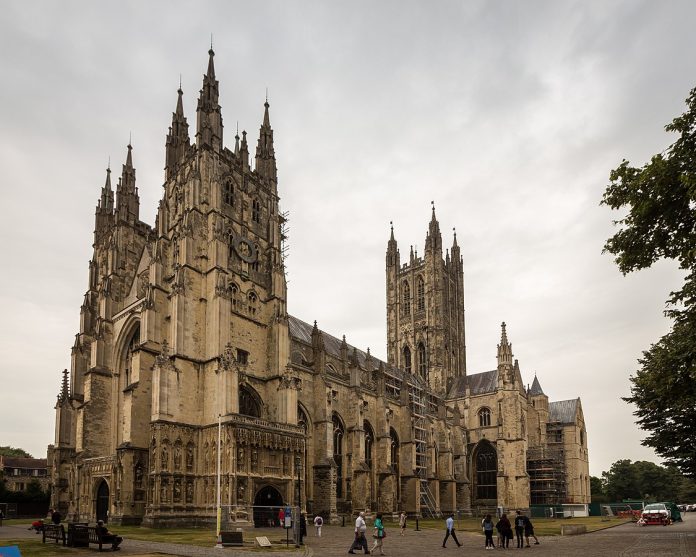Two saints are commemorated on this 19th of April, both of the Middle Ages:
Saint Ælfheah of Canterbury, more commonly known as ‘Alphege’, was born in 953 outside of Bath in southern England. In youth, he chose the higher path, becoming an anchorite, enclosing himself in as a hermit and dedicating his life solely to God. But his virtue and holiness were soon recognized, and he was chosen as the Abbot of Glastonbury Abbey, in which task dedicated himself to the beauty and transcendence in liturgy. One anecdote that stood out for me was his having an organ constructed in the cathedral that took 24 men to operate (organs had to be manually pumped back then), and could be heard a mile away (what must it have sounded like sitting in the pews!)
In 1006, Alphege was chosen Archbishop of Canterbury, and the diocese flourished during his reign. But these were fraught days with enemies all around, and five years later the good bishop was captured in a raid by the pagan Danes, who razed the cathedral (it would be rebuilt to its current glory) and held the bishop for ransom. Alphege, however, refused either to pay, or have others pay for his release. After a few months, the pagan Danes, in a drunken revelry on this April 19th in 1012, made sport of their hostage, throwing whatever they could find at him, before finishing him off with a axe-blow to the head.
Saint Alphege was venerated as a martyr, and it is to him that another bishop of Canterbury, Thomas Becket, prayed before his own martyrdom.
Pope Saint Leo IX was elected to the chair of Peter in 1049, at the age of 47 (which seems very young now for a Pope, but life expectancies were far lower back then), and reigned until his death in 1054. He is known for battling the entrenched vices of simony and clerical ‘marriage’, which is really clerical concubinage, for priests cannot get validly married (which is different from priests being validly married, for even in the East, a priest must get married before his ordination to the priesthood – more on that, perhaps, anon).
Pope Leo also clarified and corrected the errors of Berengar of Tours, who denied transubstantiation, and the reality of Christ’s presence in the Eucharist.
More controversially, it was under the authority of Leo IX, by means his legate, Cardinal Humbert, that the Patriarch of Constantinople, Michael Cerularius, was excommunicated on July 16th, 1054 When Humbert marched up the nave to place the decree on the altar of Hagia Sophia, the Patriarch immediately excommunicated the Pope and his legates.
It may have all been for naught, for Pope Leo had died in the meantime, making Humbert’s excommunication likely null. And no one, not even a patriarch, can ‘excommunicate’ the Pope. But the formal schism between the Churches of the East and West had begun, and, in some way, continues to our own day. In 1965, in the wake of the Second Vatican Council, Pope Paul VI and Patriarch Athenagoras formally abolished the excommunications, casting them into oblivion, and we may hope and pray for full reunion between what Pope John Paul called the ‘two lungs of the Church’ breathe together again one day. +


